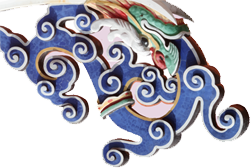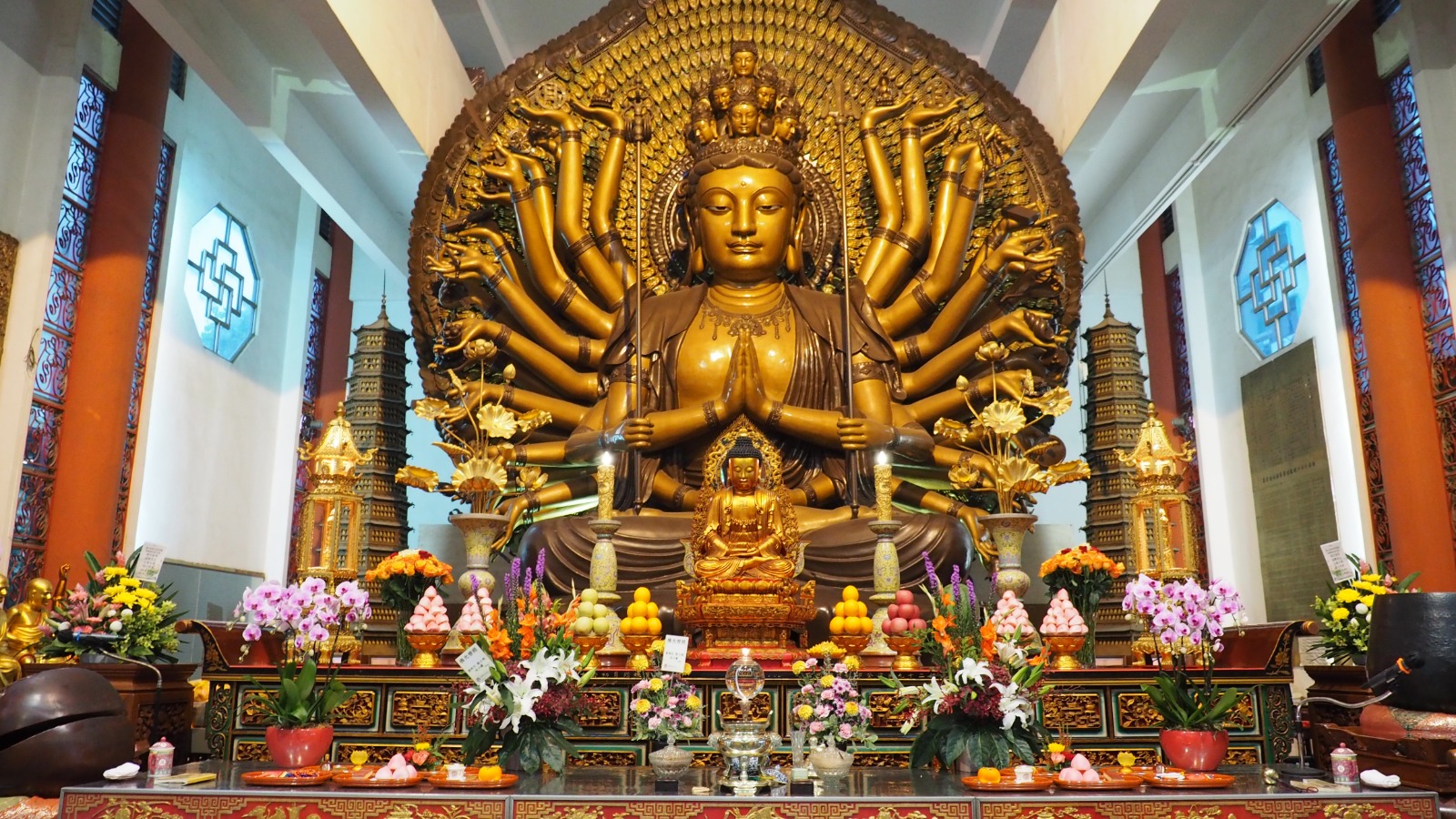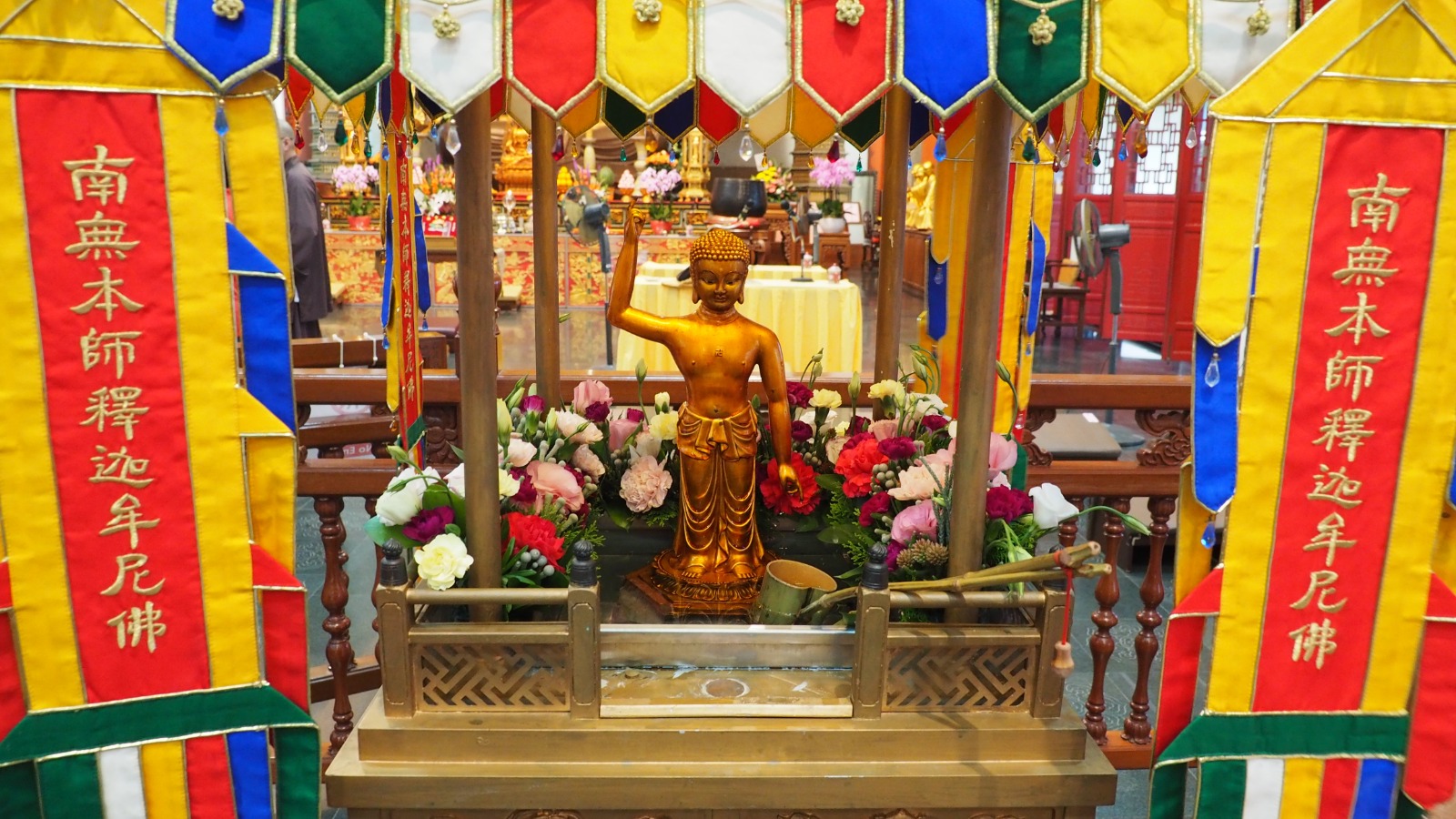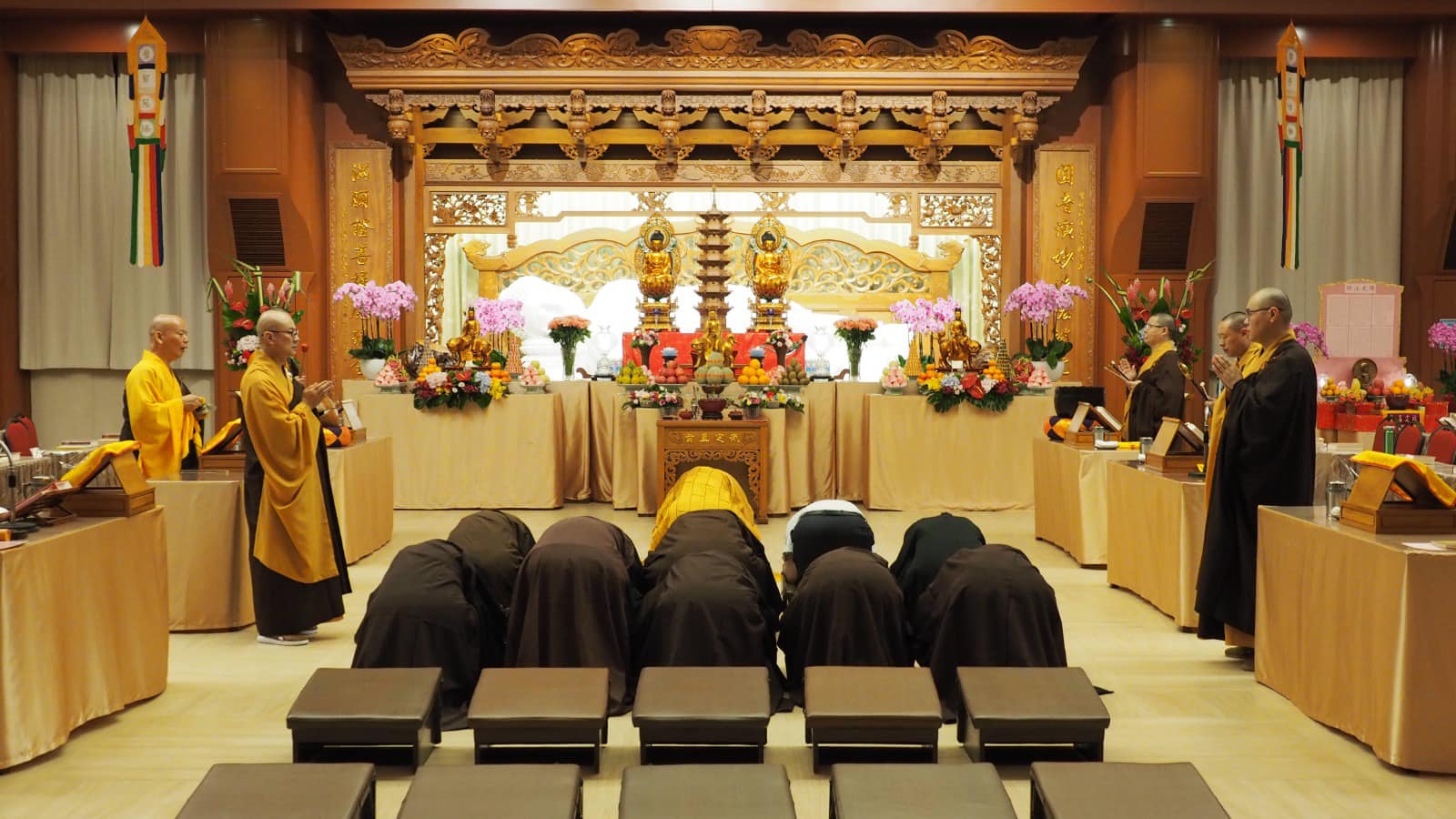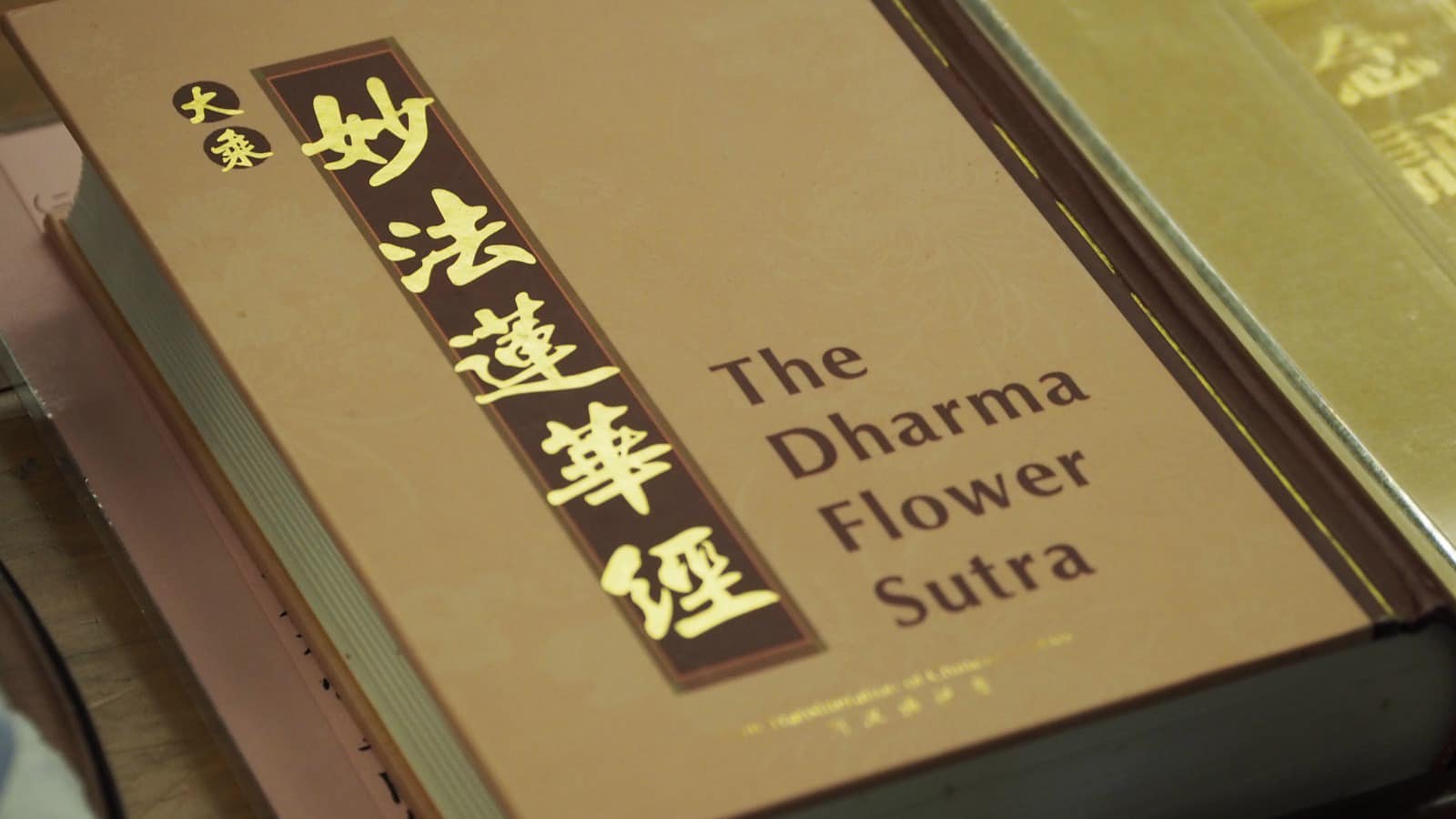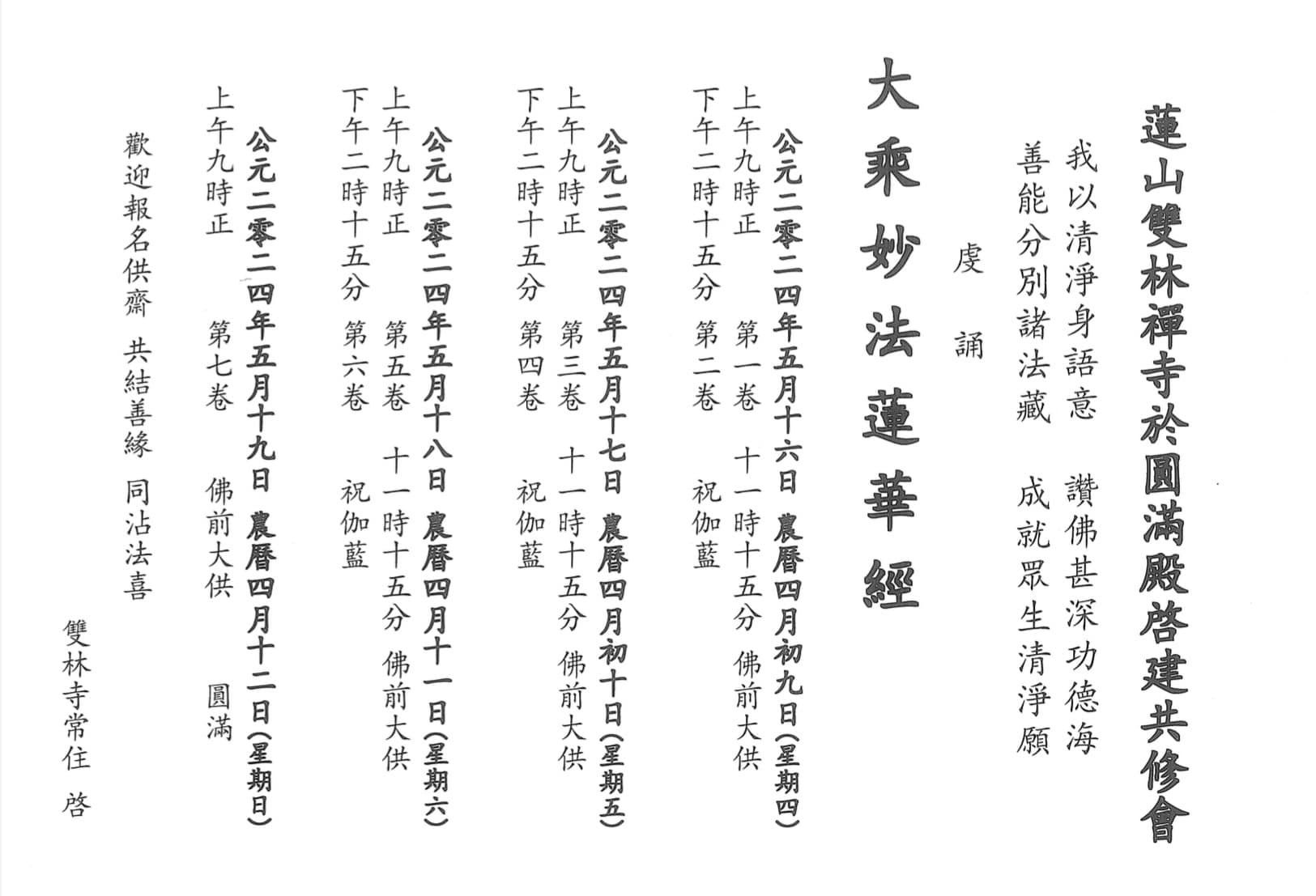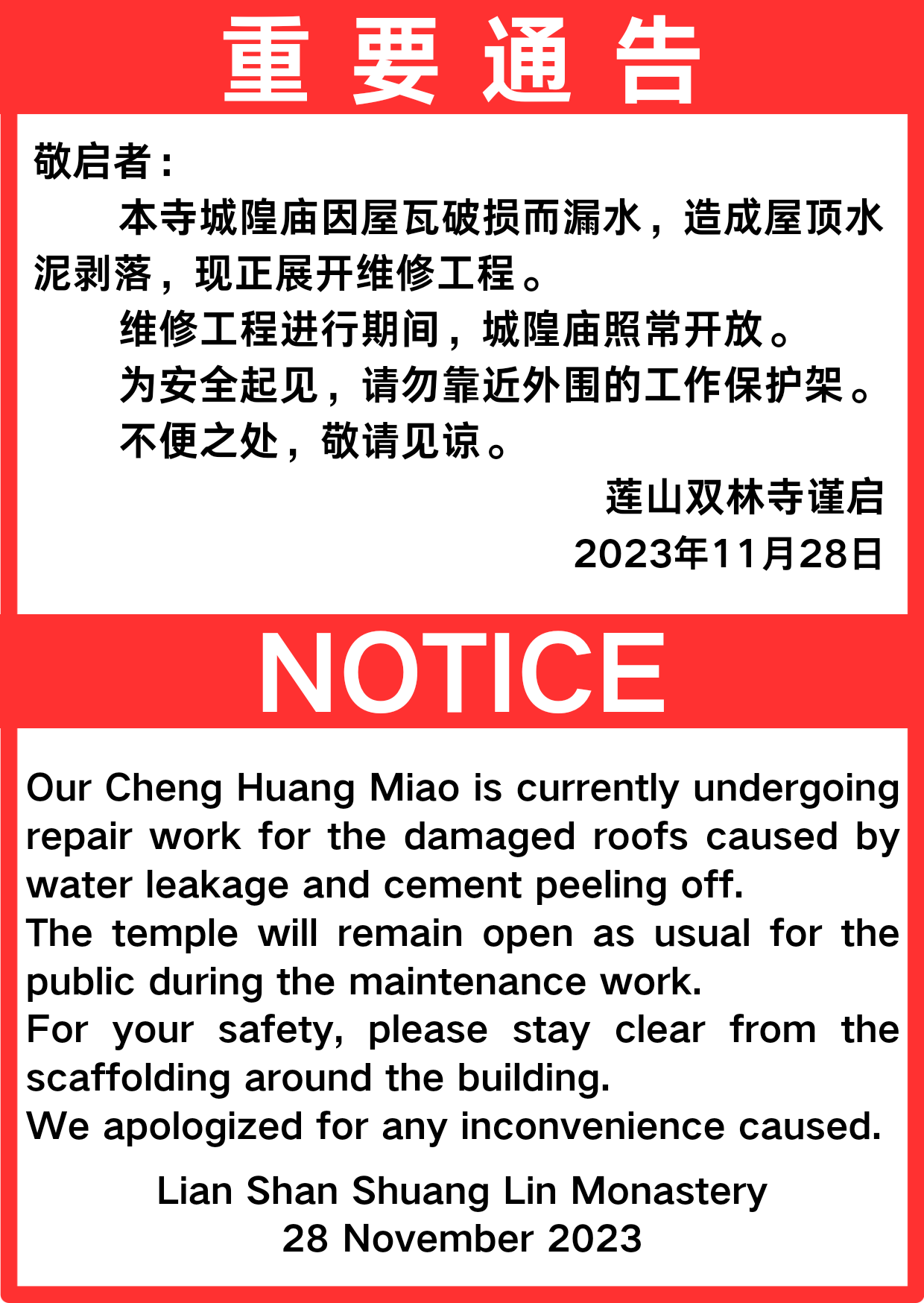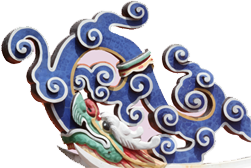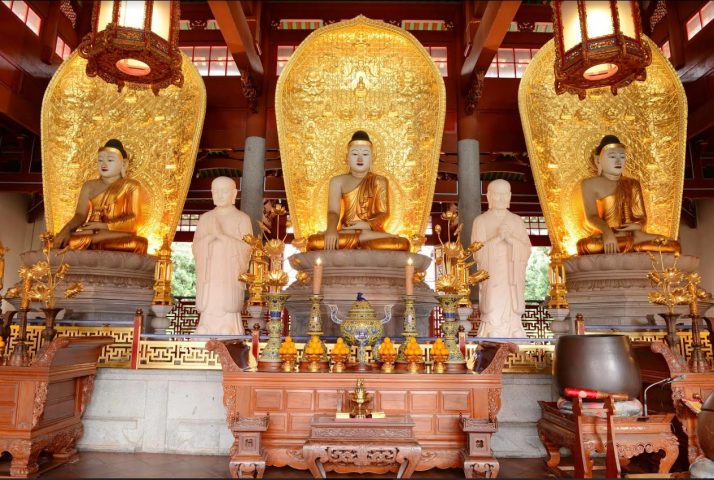
The construction of the original Mahāvira Hall began in 1904 and was completed in 1907. For more than a century, this Hall had undergone both restoration and renovation. Located along the central axis from south to north, this is the most important and most decorated hall in the monastery.
Inside the Hall, there are Buddhas of the three worlds, all sitting cross-legged on the altar. In the centre enshrines the Śākyamuni Buddha, the master of this world, flanked by two of his ten chief disciples – Venerable Mahākāśyapa and Venerable Ānanda on his left and right respectively. He was born to a royal family and was given the name Siddhartha. For the ultimate reality of life, he renounced his royal background at the age of 29. With great determination, six years later, he awakened and became the Buddha under a Bodhi tree. For 45 years, he lived and shared the Dharma he had discovered under the Bodhi tree and passed away at the age of 80. On his left, in similar posture, is the Bhaṣajyaguru Tathāgata or Medicine Buddha who possesses the power to heal and the ability to avert evil and prolong life. On his right, is the Amitabha Buddha, or master of the Sukhāvatī or Western Paradise in simple translation.
Above these Buddhas, there are three exquisitely carved caisson ceilings or ZaoJing which are crafted to represent the Buddhas’ canopies. The entire Hall is well supported by 26 pillars, with some as tall as 10 metres. The unique blend of Fuzhou and Quanzhou architectural styles in the Hall exhibits not only the skilled workmanship of those workers but also an insight into the distinctive cultures of early immigrants in Singapore.


